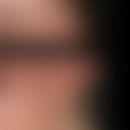Synonym(s)
HistoryThis section has been translated automatically.
DefinitionThis section has been translated automatically.
Chronic, follicular and perifollicular necrotizing inflammation of unknown origin. It is assumed that due to pathological cornification processes in the follicleostium, the hair breaks through the follicular epithelium and thus maintains a chronic inflammation. S.a.u. Hyperkeratosis follicularis uraemica. The disease has an eminently chronic, year-long course.
You might also be interested in
Occurrence/EpidemiologyThis section has been translated automatically.
In recent years, increasing descriptions of the clinical picture under treatment with tyrosine kinase inhibitors. Continued occurrence in HIV-infected persons.
EtiopathogenesisThis section has been translated automatically.
Triggering by chemical substances, e.g. formaldehyde in clothing, is being discussed. The disease is also observed in patients with diabetes mellitus and chronic terminal renal failure (see also"reactive perforating collagenosis". In contrast to this disease, the Koebner phenomenon cannot be triggered). Also occurs in HIV-infected persons.
ManifestationThis section has been translated automatically.
First appearance of skin changes between the ages of 20 and 40. No gender bias.
LocalizationThis section has been translated automatically.
Clinical featuresThis section has been translated automatically.
0.2-0.5 cm large, slightly raised, reddened, sometimes itchy, red, follicular papules with a central horn plug. Small, punctiform bleedings when the clot is removed.
HistologyThis section has been translated automatically.
Differential diagnosisThis section has been translated automatically.
External therapyThis section has been translated automatically.
Cave!
Do not apply preparations containing benzoyl peroxide to the mucous membranes; caution is advised for atopic persons!Internal therapyThis section has been translated automatically.
LiteratureThis section has been translated automatically.
Batalla A et al (2014) Delayed onset perforating folliculitis associated with sorafenib. Australas J Dermatol 55:233-235
- Kruger K et al (1999) Acquired reactive perforating dermatosis. Successful treatment with allopurinol in 2 cases. dermatologist 50: 115-120
- Mahajan S et al (2004) Perforating folliculitis with jaundice in an Indian male: a rare case with sclerosing cholangitis. Br J Dermatol 150: 614-616
- Mehregan AH, Coskey RJ (1968) Perforating folliculitis. Arch Dermatol 97: 394-399
- Pavlovic MD et al (2003) Trauma-induced perforating folliculitis. Eur J Dermatol 13: 592
- Rubio FA et al (1999) Perforating folliculitis: report of a case in an HIV-infected man. J Am Acad Dermatol 40:300-302
Wolber C et al (2009) Perforating folliculitis, angioedema, hand-foot syndrome--multiple cutaneous side effects in a patient treated with sorafenib. J Dtsch Dermatol Ges 7:449-452
Incoming links (6)
Dermatosis perforating; Folliculitis granulomatosa perforans; Perforated folliculitis; Perforating folliculitis; Renal diseases skin changes; Salicylic acid acne spirit 5 or 10 % (nrf 11.23.);Outgoing links (11)
Azelaic acid; Benzoyl peroxide; Collagenosis reactive perforating; Dexpanthenol; Hyperkeratosis follicularis uraemica; Keratosis pilaris; Kyrle's disease; Papel; Retinoids; Salicylic acid acne spirit 5 or 10 % (nrf 11.23.); ... Show allDisclaimer
Please ask your physician for a reliable diagnosis. This website is only meant as a reference.







